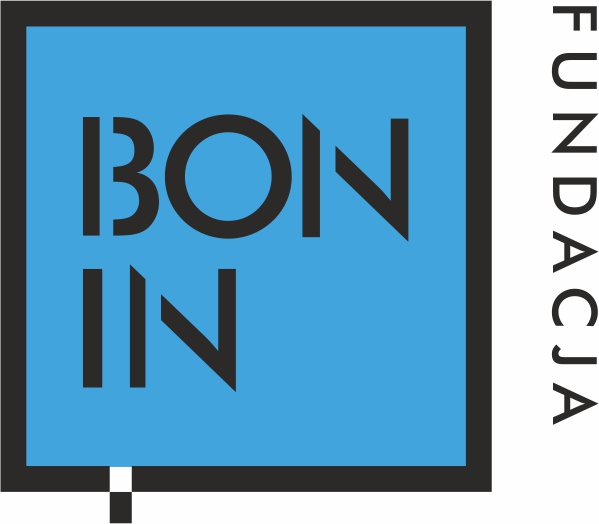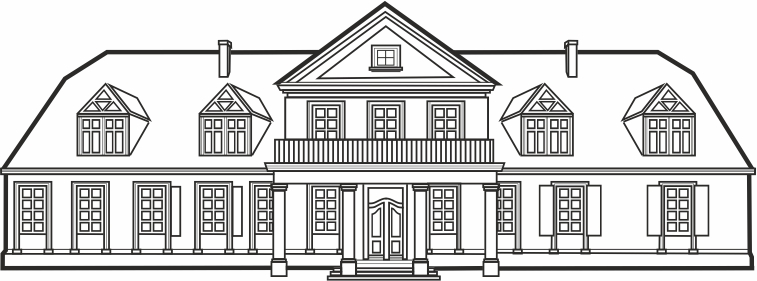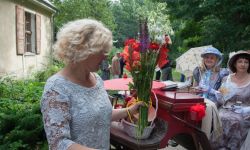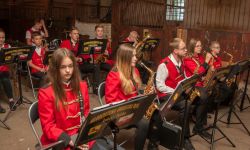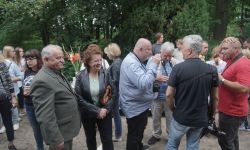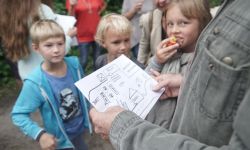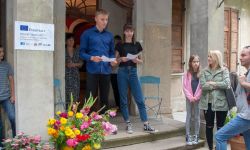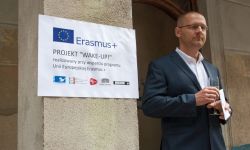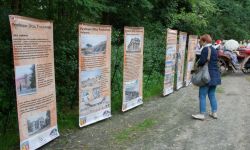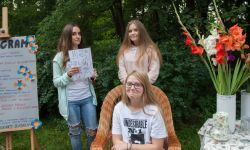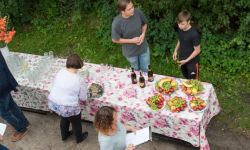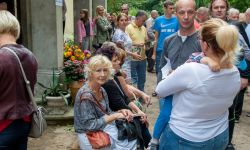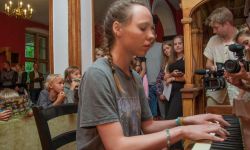Summer festival
In the summer festival "Wake-up!" In 2017, the youth showed the results of their efforts, over which they worked with non-formal methods, during two summer meetings. An important element of the festival was participation in a guided tour with the use of interactive resources.
1. Seat of the Bonin Foundation - ‘At the iron gate’
Bonin Foundation is housed - along with the Equestrian Training Centre - in an old manor surrounded by a park with ancient trees. Horses have been present here for quite a long time. The owner of the manor before the Second World War bred and trained them for races in Berlin and Sopot, and after the war, the building housed the Stud Training Centre belonging to the nearby State Stud in Łobez. Young stallions would complete their one-year training in Bonin with a performance test to check what they have learned. Horses are still trained here for races, sports and recreation.

2. Owing to its open-air gym and angling possibilities, the pedestrian promenade in Łobez is a great spot for leisure activities and relaxation. It also boasts a beautiful, thought-provoking memorial to Pope John Paul II.
Film "Strong, stronger Łobez"

3. Ruins of the Roland statue. In the 1920s, a mound crowned with a Roland statue was erected in Łobez to commemorate the 208 inhabitants of the town who died in World War I. In the 1970s, communist local authorities ordered that the statue be destroyed. According to the communists, it represented the oppression of peasants by the nobility as well as constituting a reminder of the German cultural legacy in the area. The remains of the statue were scattered on the western side of the mound.
Film "Roland"

4. Residents of Bonin remember the pre-war inhabitants of the village. We invite you to watch an interview with Czesława Osiecka.
Film "Pani Czesława" -

5. Bonin has been attracting tourists from all over the world for a long time. This milestone proves that visitors arrived here even 300 years ago.
Film "Kronika plenerowa" -

6. "At the ponds. The spirits are here"
Where else should one look for spirits? Stop, listen to the sound of the trees and look at the misty ponds and fields. You will meet them here for sure. Don’t rush, slow down. The village, its fields and ponds are still in the same place and look the same as centuries ago. Hopefully they will remain like this for centuries to come.
Film „Duchy”

7. "By the church"
This is the village of Bonin. Its name hasn’t changed for centuries; bonum means ‘good’ in Latin. The buildings are from the 19th century, but the layout is that of a medieval oval village. In the centre, there is an old church with a tower that can be seen from afar. Everything has remained as it was hundreds of years ago: the dressed stone and the tree-lined, cobbled roads. It is a great advantage of this place. Hiking, cycling and horse riding trails meet here. And there are more horses in Bonin than people. Who knows, maybe it is a world record?
Film "Chciejski poradnik wiejski"

8. The Jahn Clearing, commonly called ‘the frying pan’ by the locals, is an ideal spot for relaxation in natural surroundings. Things to do here include a quiet picnic, a spell of dreaming and hunting for wild mushrooms.
Film "Polana Jahna"

9. The railway station is not only a place frequented by trains connecting the two largest cities of West Pomerania; it is also an ideal site for protests. In the past, it was often here that the locals gathered to express their views or discontent. One of the most interesting protests concerned the reluctance on the part of the authorities to make Łobez a district town. The locals appeared every day at the station and blocked the tracks, preventing the trains from passing through. The most troublesome result of the blockade was that the train traffic between Gdańsk and Szczecin was stopped. It did the job - the protesters achieved their goal.
10. Das Lapidarium ist ein Ort und gleichzeitig eine Idee, deren Ziel der Erhalt der Erinnerung an die deutschen Bewohner von Labes vor dem Jahre1945 ist. Unweit befindet sich ein Denkmal zur Erinnerung eines der berühmtesten Söhne der Stadt – Otto Puchstein, Mitbegründer des Pergamonmuseums in Berlin.



